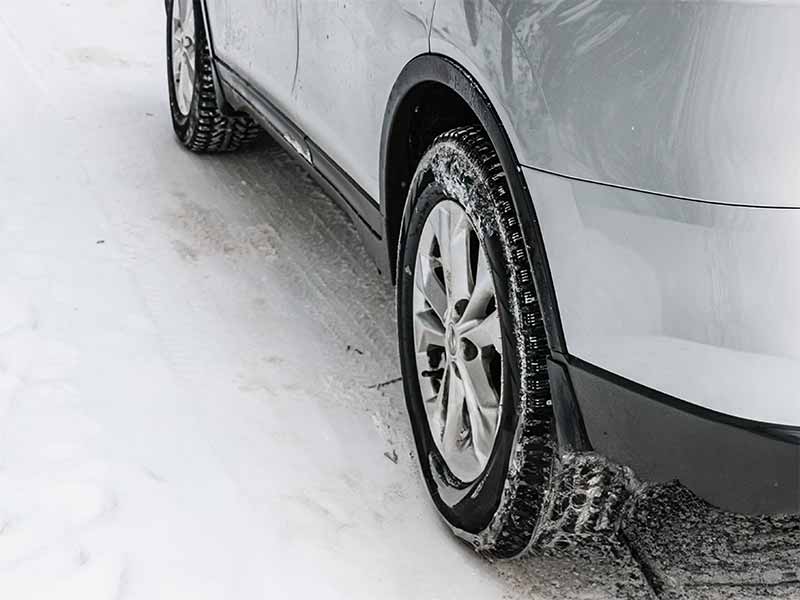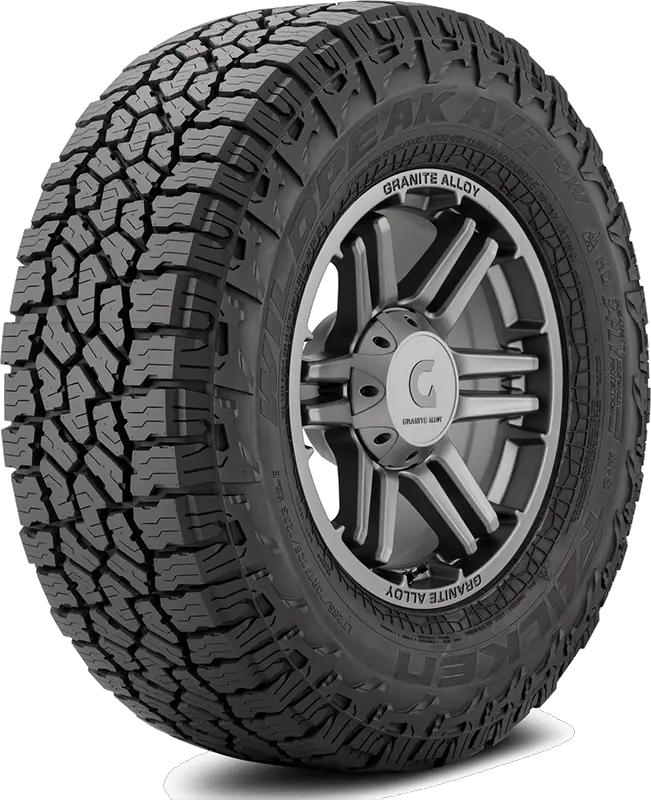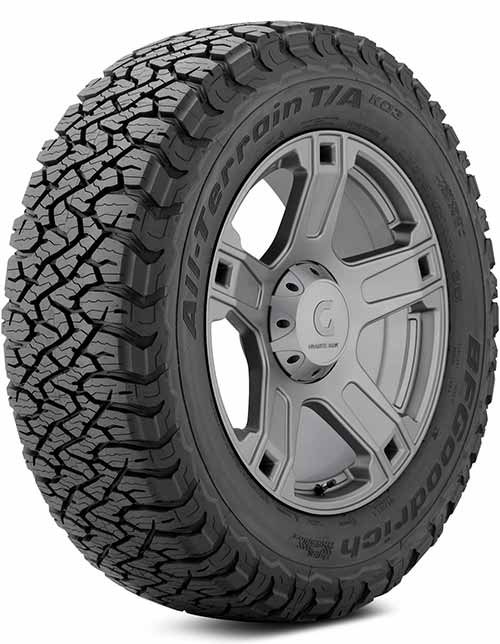Are you considering saving some money this winter by only buying two snow tires for your vehicle? If you’re weighing the pros and cons of fully equipping your car with snow tires versus just outfitting the drive wheels, this article is for you.
Do You Need Snow Tires On All 4 Wheels?
Yes, you need snow tires on all four wheels, regardless of whether your vehicle is FWD, RWD, or AWD. Equipping all four wheels with snow tires ensures balanced traction, stability, and safety in winter conditions.
In this article, we’ll explore the importance of snow tires for various drive systems, including front wheel drive, rear wheel drive, and all wheel drive vehicles, and compare them with all-season and summer tires to help you make an informed decision for safe winter driving.

Understanding Different Drive Systems
The drive system of your vehicle plays a big role in how it handles, especially in challenging conditions like snow and ice. Understanding this will help you make better decisions when it comes to equipping your vehicle with the right tires for winter driving.
Let’s break down the three main drive systems: Front Wheel Drive (FWD), Rear Wheel Drive (RWD), and All Wheel Drive (AWD).
Front Wheel Drive (FWD)
- What It Is: In FWD vehicles, the power from the engine goes to the front wheels. This means the front wheels are responsible for moving the car forward and for steering.
- Why It Matters for Tires: Since the front wheels do most of the work, they experience more wear and tear. In snowy conditions, these are the wheels that need the most traction to prevent slipping.
Rear Wheel Drive (RWD)
- What It Is: RWD vehicles send power to the rear wheels. These cars are often praised for their balance and handling.
- Why It Matters for Tires: The rear wheels in these vehicles handle the pushing force while driving. Good traction on the rear tires is essential, especially on slippery roads, to keep the car stable and prevent it from fishtailing.
All Wheel Drive (AWD)
- What It Is: AWD vehicles distribute power to all four wheels. This can vary depending on the vehicle and conditions.
- Why It Matters for Tires: AWD systems are great for providing balanced power and traction. However, this doesn’t mean they can ignore the need for proper winter tires. All four tires need to have good grip to make the most of the AWD system.
Four Wheel Drive (4WD)
- What It Is: Often confused with AWD, 4WD is typically used in off-road or heavy-duty vehicles. It sends power to all four wheels to handle tough terrain.
- Why It Matters for Tires: Like AWD, 4WD benefits greatly from having the right tires for the conditions, especially in challenging environments like mud, snow, or ice.
In my experience, no matter the drive system, the right tires make a huge difference in safety and performance. Especially in winter, choosing tires that suit your vehicle’s drive system is crucial. For more detailed information on how different tires perform in winter conditions, you can read about studded tires vs chains and what are winter tires.
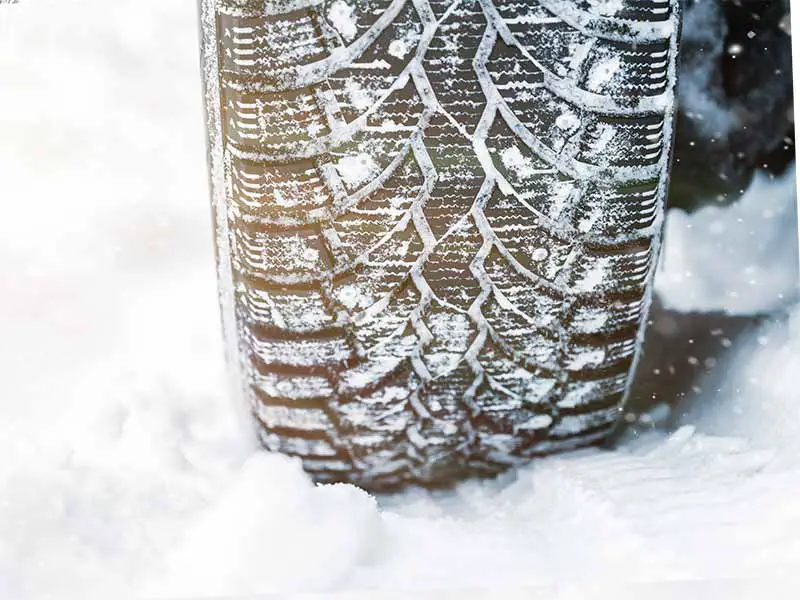
The Role of Snow Tires in Winter Safety
While your vehicle’s drive system is important, the type of tires you use in winter plays an equally crucial role in ensuring your safety and the safety of others on the road. Snow tires are an investment in your safety and should be a top priority for winter driving.
Let’s dive into why snow tires are essential for navigating snowy and icy conditions safely.
What Makes Snow Tires Special
- Designed for Cold Weather: Snow tires are made from a special rubber compound that stays flexible in cold temperatures. This flexibility helps them grip the road better than regular tires in winter conditions.
- Unique Tread Patterns: They have deep treads and unique patterns designed to channel snow and slush away from the tire, improving traction.
- Biting Edges: Snow tires are equipped with tiny grooves called sipes, which provide additional biting edges to grip the road in icy conditions.
Why Snow Tires Are a Must for Winter Driving
- Improved Traction: The biggest advantage of snow tires is their superior traction on snow and ice. This traction is crucial for starting, stopping, and steering on slippery roads.
- Enhanced Safety: With better grip, snow tires reduce the risk of skidding and accidents, making your winter driving experience safer.
- Peace of Mind: Knowing your vehicle is equipped with tires specifically designed for winter conditions can give you a greater sense of security and confidence while driving.
Snow Tires vs. Regular Tires
- All-Season Tires: While all-season tires are versatile, they don’t provide the same level of grip and safety as snow tires in winter conditions.
- Summer Tires: Summer tires are almost ineffective in winter. They become hard and lose traction in cold temperatures.

Snow Tires on Front Wheel Drive Vehicles
I strongly recommend fitting all four wheels of an FWD vehicle with snow tires. This approach ensures balanced traction, better control, and overall safer driving experience in winter conditions.
For those considering different tire options for their FWD vehicles, it’s important to weigh the benefits of complete winter readiness against the risks of partial solutions.
Let’s explore why equipping all four wheels with snow tires on Front Wheel Drive (FWD) vehicles is essential.
The Importance of Four Snow Tires on FWD Vehicles
- Balanced Traction: While FWD vehicles rely on the front wheels for motion, having snow tires only on the front can lead to an imbalance. This imbalance can cause the rear of the car to lose traction and slide, especially in turns or sudden stops.
- Uniform Handling: Four snow tires ensure that both the front and rear of the vehicle have similar grip levels. This uniformity is crucial for predictable handling in snowy conditions.
- Safety in Braking and Turning: With snow tires on all four wheels, FWD vehicles have better stability during braking and turning, reducing the risk of accidents.
Addressing Common Misconceptions
- Front Wheels Only: Some might think that putting snow tires just on the front wheels of an FWD vehicle is enough. However, this can lead to a false sense of security. The rear wheels, if not equally equipped, can lose grip and cause the vehicle to spin.
- Cost vs. Safety: While it might seem cost-effective to buy only two snow tires, the potential risk to safety in winter conditions is not worth the savings.
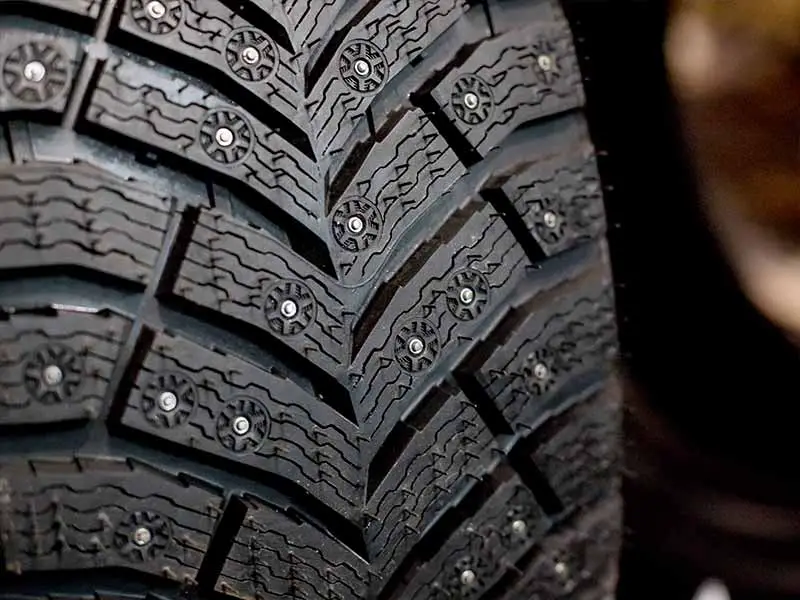
Snow Tires on Rear Wheel Drive Vehicles
I strongly advise equipping all four wheels of an RWD vehicle with snow tires. This setup not only provides the necessary traction for the rear wheels to push the vehicle but also ensures that the front wheels can effectively steer and brake.
Let’s delve into why it’s crucial to have snow tires on all four wheels of RWD vehicles.
The Necessity of Four Winter Tires on RWD Vehicles
- Traction for Propulsion and Stability: In RWD vehicles, the rear wheels are responsible for moving the car. Snow tires on these wheels are essential for propulsion in snowy conditions. However, if only the rear wheels have snow tires, the front wheels may lack the necessary grip for steering and braking.
- Balanced Handling: Having snow tires on all four wheels ensures that the vehicle has a uniform grip. This balance is vital for preventing oversteer or understeer, where the car turns more or less than intended.
- Safety in Varied Winter Conditions: RWD vehicles can be particularly challenging to handle in winter. Equipping them with snow tires on all four wheels enhances safety, especially when encountering ice, slush, or deep snow.
Addressing Misconceptions and Risks
- Rear Tires Only: Some might think that putting snow tires only on the rear wheels of an RWD vehicle is sufficient. However, this can lead to a mismatch in traction between the front and rear, making the vehicle difficult to control, especially in emergency maneuvers.
- Cost Considerations: While the initial cost of four snow tires might seem high, the investment significantly reduces the risk of accidents and improves overall vehicle handling in winter conditions.
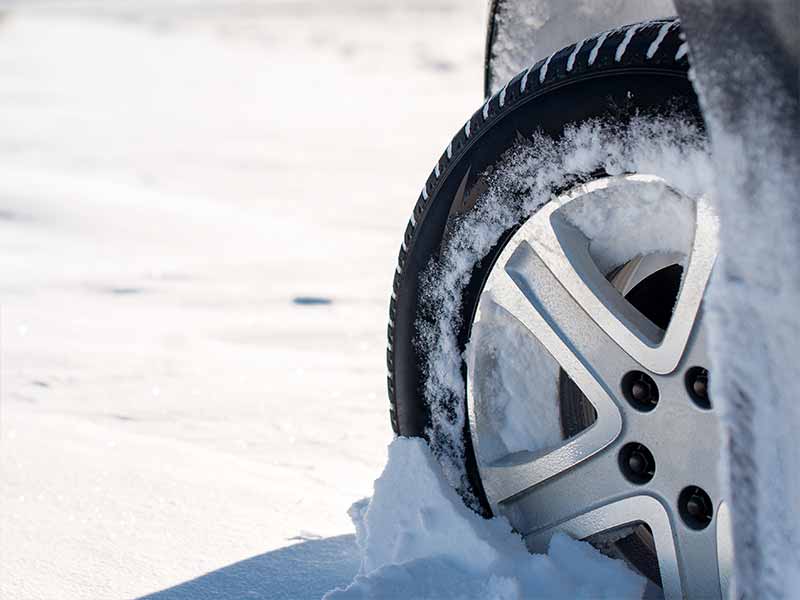
Snow Tires and All Wheel Drive & 4WD Vehicles
I strongly recommend that AWD and 4WD vehicle owners equip their cars or trucks with 4 snow tires during the winter months. This combination of AWD and 4 snow tires offers the best possible traction and control in winter driving conditions.
Let’s explore why AWD vehicles also benefit significantly from having snow tires on all four wheels.
Why AWD Vehicles Need Snow Tires Too
- Enhanced Traction for All Wheels: AWD systems distribute power to all four wheels to optimize traction. However, the effectiveness of this system is greatly amplified when all four tires are specifically designed for snow and ice.
- Uniform Grip and Handling: Snow tires ensure that each wheel has the same level of grip, which is crucial for the balanced handling of AWD vehicles. This uniformity is essential for maintaining control, especially in slippery conditions.
- Safety in Diverse Winter Scenarios: AWD helps in getting moving on slippery surfaces, but snow tires are what provide the necessary grip for turning and stopping. This is especially important in icy conditions or during sudden stops.
Addressing Common Misconceptions
- Overconfidence in AWD: There’s a common belief that AWD vehicles don’t need snow tires because the AWD system is enough to handle winter conditions. While AWD improves traction for acceleration, it doesn’t provide the same benefits for braking or cornering that snow tires do.
- All-Season Tires vs. Snow Tires: Some AWD vehicles come with all-season tires, which are not as effective in severe winter conditions as snow tires. The specific design of snow tires makes them a better choice for icy roads and heavy snowfall.
Resources
Below are some links you may find helpful when learning about tires:
- Winter driving tips – National Highway Traffic Safety Administration
- How to choose the right tire for your vehicle – Consumer Reports
Final Thoughts
For front wheel drive vehicles, snow tires provide essential traction for both propulsion and steering. Rear wheel drive vehicles benefit from the balanced handling and stability that snow tires offer, especially in slippery conditions. All wheel drive vehicles, while superior in distributing power, still require the enhanced grip of snow tires for optimal performance in winter.
While all-season tires might suffice in milder conditions, they don’t offer the same level of safety and control as snow tires in severe winter weather. And summer tires should be avoided altogether in cold temperatures.
Making the right tire choice is about ensuring your safety and the safety of others on the road during the challenging winter months.
Good luck and happy motoring.
